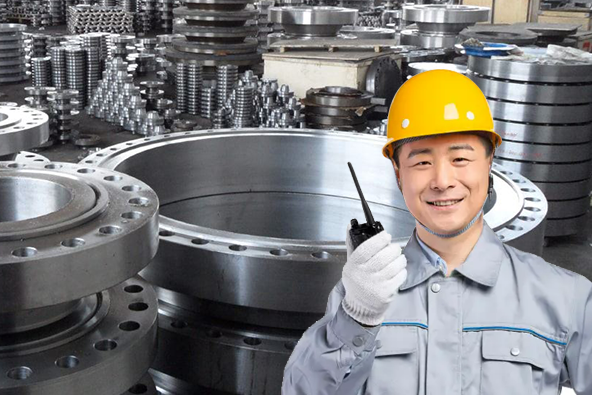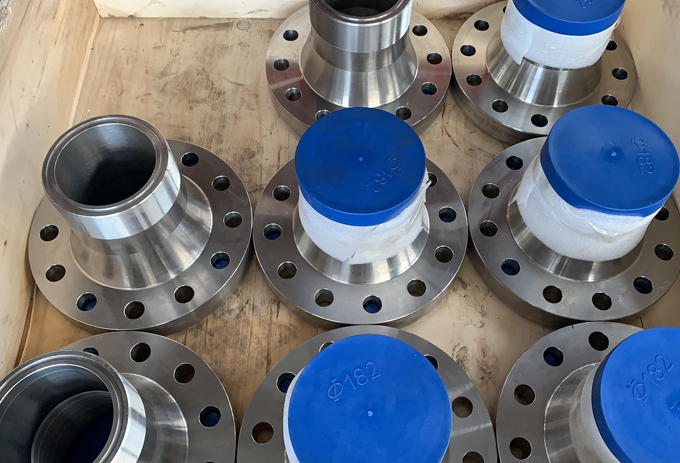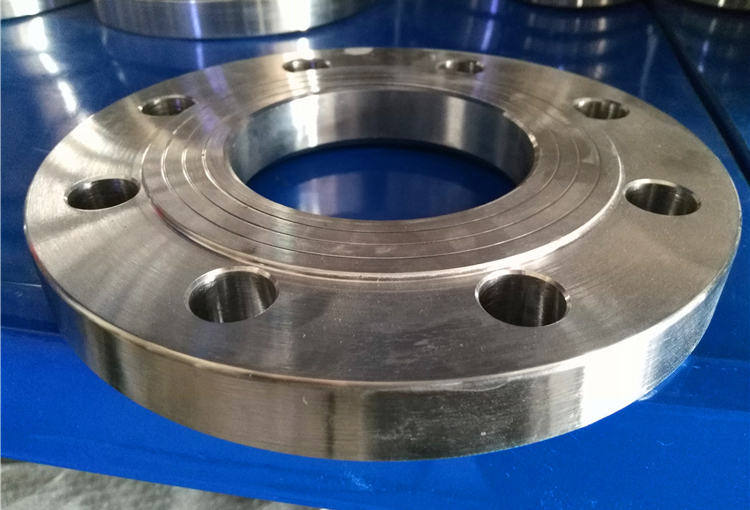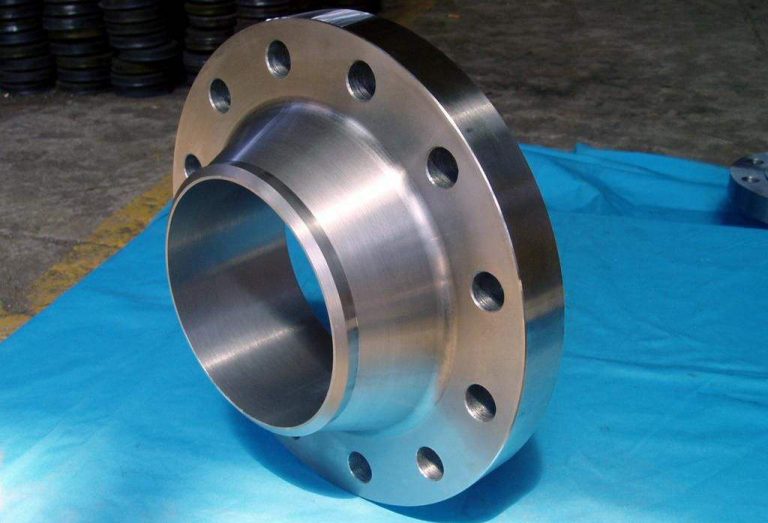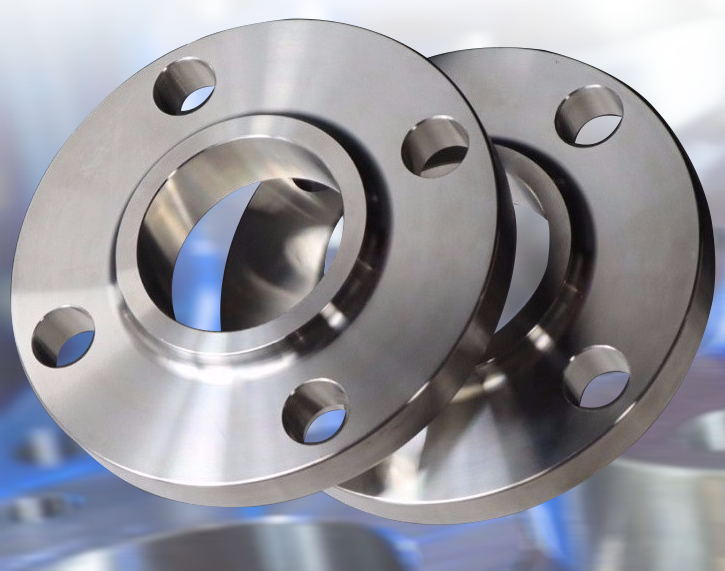In this blog, we will delve into the world of ASME Flange, exploring its definition, standards, and applications across various industries. We will also highlight the expertise of Hebei Yanhao Pipeline Equipment Co., Ltd. (“YANHAO”), a renowned manufacturer in the field of ASME Flange.

What is ASME Flange?
ASME Flange refers to a type of flange that conforms to the standards set by the American Society of Mechanical Engineers (ASME). Flanges are components used in pipeline systems to connect pipes, valves, pumps, and other equipment. They provide a means of joining or terminating sections of a pipeline while allowing for easy assembly, disassembly, and maintenance.
ASME Flanges are designed to meet specific criteria outlined in various ASME standards, including ASME B16.5 and ASME B16.47. These standards define the dimensions, materials, pressure ratings, and other technical specifications for flanges used in different industrial applications.
The ASME Flange system includes a variety of flange types, such as weld neck, slip-on, blind, threaded, and socket weld flanges, among others. Each type has its unique features and uses, but they all share the common goal of providing a secure and leak-resistant connection in a pipeline system.
ASME Flanges are widely used in industries such as oil and gas, chemical, petrochemical, power generation, and water treatment, where reliable and efficient piping systems are essential. These flanges play a crucial role in maintaining the integrity and safety of these systems by facilitating easy installation, enabling proper alignment of pipes, and supporting the transfer of fluids or gases under different operating conditions.
ASME Flanges are manufactured using various materials, including carbon steel, stainless steel, and alloy steel, depending on the specific application and operating conditions. They are manufactured using advanced production techniques, including forging, machining, and heat treatment, to ensure high-quality and precise dimensions.
Overall, ASME Flanges provide a standardized and reliable solution for connecting pipes in various industrial settings. Their adherence to ASME standards ensures compatibility, safety, and ease of maintenance in pipeline systems.
The basic concept of ASME flange
Overview of ASME standards and their significance
ASME standards play a crucial role in regulating the design, manufacture, and use of various engineering and industrial products, including ASME Flanges. These standards are developed by the American Society of Mechanical Engineers (ASME) and are widely recognized and implemented globally. Here is an overview of ASME standards and their significance:
- Safety and Reliability: ASME standards are designed to ensure the safety and reliability of products and processes. They outline requirements for materials, design, fabrication, testing, and inspection, aiming to prevent failures, accidents, and other potential hazards.
- Consistency and Compatibility: ASME standards provide a common language and framework for manufacturers, engineers, and users to understand, communicate, and interact effectively. They promote consistency, compatibility, and interchangeability of products across different manufacturers, industries, and geographical regions.
- Quality Assurance: ASME standards establish guidelines and best practices for quality management, ensuring that products meet the desired performance and reliability requirements. Compliance with ASME standards helps manufacturers demonstrate their commitment to quality assurance and customer satisfaction.
- Global Acceptance and Recognition: ASME standards are widely accepted and recognized globally. Industries and regulatory bodies worldwide rely on these standards to ensure safety, quality, and consistency. Compliance with ASME standards often becomes a prerequisite for international trade and market access.
- Continuous Improvement and Innovation: ASME standards are regularly reviewed, updated, and improved to keep pace with technological advancements and industry needs. Revision cycles and ongoing research support the continuous improvement and innovation in engineering practices, materials, and manufacturing techniques.
- Cost Efficiency and Risk Mitigation: By specifying materials, dimensions, tolerances, and testing requirements, ASME standards help reduce the risk of product failures, downtime, and maintenance costs. They provide a basis for making informed decisions on component selection, fabrication processes, and operating conditions.
In the case of ASME Flanges, compliance with ASME standards ensures that the flanges meet the required specifications and perform reliably in the intended applications. It enables manufacturers, engineers, and end-users to have confidence in the safety, quality, and performance of the flanges, leading to efficient and dependable pipeline systems.

Key features and benefits of ASME Flange
ASME Flanges offers several key features and benefits that make them a preferred choice in various industrial applications. Here are some of the main features and benefits:
- Standardization: ASME Flanges conform to globally recognized standards set by the American Society of Mechanical Engineers (ASME). This standardization ensures compatibility and interchangeability, allowing flanges from different manufacturers to be used interchangeably, and simplifying installation, replacement, and maintenance.
- Reliable Connection: ASME Flanges are designed to provide a secure and leak-resistant connection between pipes, valves, and other equipment. The flange design, including sealing surfaces, bolted connections, and gasket materials, ensures a tight and reliable joint, preventing fluid or gas leakage.
- Versatility: ASME Flanges come in various types, such as weld neck, slip-on, blind, threaded, and socket weld flanges, among others. This versatility allows them to be used in a wide range of applications and industries, including oil and gas, chemical, petrochemical, power generation, and water treatment.
- Pressure and Temperature Capability: ASME Flanges are designed to handle a wide range of pressures and temperatures. They are available in different pressure classes, ranging from 150 to 2500, and are suitable for various temperature ranges, making them suitable for both low-pressure and high-pressure applications.
- Material Selection: ASME Flanges can be manufactured using different materials, including carbon steel, stainless steel, and alloy steel. This material flexibility allows for compatibility with specific fluids, corrosive environments, or extreme operating conditions.
- Durable and Long-lasting: ASME Flanges are made using high-quality materials and undergo stringent manufacturing processes. This ensures their durability and long-term performance, reducing the need for frequent replacement or repairs and minimizing downtime.
- Quality Assurance: ASME Flanges comply with rigorous quality control and testing requirements outlined in ASME standards. This ensures that the flanges meet the necessary performance and reliability criteria, providing peace of mind to manufacturers, engineers, and end-users.
- Easy Maintenance: ASME Flanges are designed to facilitate easy assembly, disassembly, and maintenance. The bolted flange connections allow for quick and straightforward removal and replacement of flanges or other components, minimizing downtime during maintenance activities.
Overall, ASME Flanges offer standardized, reliable, and efficient solutions for connecting piping systems. They provide a secure and leak-resistant connection, withstand high pressures and temperatures, and are versatile enough to be used in various industries. With their durability, quality, and ease of maintenance, ASME Flanges contribute to the stability and longevity of pipeline systems.
Importance of ASME Flange in the pipeline industry
ASME Flanges play a critical role in the pipeline industry due to the following importance:
- Leak Prevention: ASME Flanges provide a reliable and leak-resistant connection between pipes, valves, and other equipment. The flange design, including sealing surfaces and gasket materials, ensures a tight seal, preventing fluid or gas leakage. This is crucial for pipeline systems as even small leaks can lead to significant environmental damage, safety risks, and financial losses.
- Pressure containment: Pipeline systems often transport fluids under high-pressure conditions. ASME Flanges are designed to handle various pressure classes, ranging from low to high, ensuring the safe containment of fluids within the pipeline. The flange’s robust construction and bolted connections offer the necessary strength and integrity to withstand the pressure.
- Versatility and Compatibility: ASME Flanges come in various types, sizes, and pressure ratings, making them compatible with a wide range of pipes, valves, and equipment. This versatility allows for easy integration and connection within the pipeline system, enabling smooth operations and facilitating maintenance and repairs.
- Standardization and Interchangeability: ASME Flanges adhere to globally recognized standards set by the American Society of Mechanical Engineers (ASME). This standardization ensures compatibility and interchangeability between flanges manufactured by different companies. It simplifies installation, replacement, and retrofitting of flanges, reducing downtime and enhancing the efficiency of pipeline operations.
- Safety and Reliability: ASME Flanges undergo rigorous quality control and testing to meet the requirements of ASME standards. This ensures that the flanges are manufactured to high-quality standards and possess the necessary strength, durability, and performance characteristics. By using ASME Flanges, pipeline operators can have confidence in the safety and reliability of their systems.
- Corrosion Resistance: ASME Flanges can be manufactured using corrosion-resistant materials such as stainless steel or alloy steel. This is crucial in pipeline systems where the transported fluids may be corrosive. Corrosion-resistant flanges help mitigate the risk of material degradation, extending the service life of the pipeline system.
- Efficient Maintenance and Repairs: ASME Flanges are designed for easy assembly, disassembly, and maintenance. The bolted flange connections allow for quick and straightforward removal and replacement of flanges or other equipment, minimizing downtime during maintenance and repairs. This promotes efficient maintenance practices and reduces the impact on pipeline operations.
In summary, ASME Flanges are of utmost importance in the pipeline industry as they ensure leak prevention, pressure containment, compatibility, and standardization. They contribute to the safety, reliability, and efficiency of pipeline systems, thereby minimizing risks, enhancing productivity, and reducing operational costs.

Application areas and industries using ASME Flange
ASME Flanges find application in various industries and sectors that rely on pipeline systems for the transportation of fluids or gases. Some of the key industries and application areas where ASME Flanges are used include:
- Oil and Gas: ASME Flanges are widely used in the oil and gas industry for pipelines that transport crude oil, natural gas, refined petroleum products, and other hydrocarbons. They are utilized in upstream exploration and production, midstream transportation, and downstream refining and distribution processes.
- Petrochemical and Chemical Industry: ASME Flanges are essential in the petrochemical and chemical industry for pipelines carrying corrosive or hazardous chemicals. They are used in chemical processing plants, refineries, fertilizer plants, and other facilities where the safe and reliable transport of chemicals is crucial.
- Power Generation: ASME Flanges play a vital role in the power generation industry. They are used in pipelines for transporting steam, hot water, and other fluids in thermal power plants. Flanges are essential in boiler systems, heat exchangers, and other components where pressure containment is critical.
- Water and Wastewater Treatment: ASME Flanges are commonly used in water and wastewater treatment plants for pipelines carrying treated water, sewage, or sludge. Flanges ensure leakage-free connections, preventing contamination and ensuring efficient water management.
- Shipbuilding and Marine Industry: ASME Flanges are employed in shipbuilding and maritime applications for pipelines used in cooling systems, fuel systems, ballast systems, and other fluid transfer systems. Flanges withstand the marine environment’s harsh conditions, including saltwater corrosion and vibration.
- Food and Beverage Industry: ASME Flanges are used in the food and beverage industry for hygienic pipelines that transport liquid and semi-solid food products, beverages, and dairy products. Flanges meet stringent sanitary standards, ensuring the integrity and cleanliness of the process.
- Pharmaceutical and Biotechnology: ASME Flanges are utilized in pharmaceutical and biotechnology industries for pipelines carrying sterile fluids, chemicals, and gases. Flanges adhere to strict hygiene and quality standards to maintain the integrity and safety of the products.
- Mining and Minerals: ASME Flanges are found in mining and mineral processing applications for pipelines carrying slurry, ores, and mining by-products. Flanges withstand the abrasive and corrosive nature of the materials being transported.
- HVAC Systems: ASME Flanges are commonly used in heating, ventilation, and air conditioning (HVAC) systems for pipes carrying air, chilled water, or hot water. Flanges provide secure connections in HVAC distribution networks.
- Construction and Infrastructure: ASME Flanges are employed in construction and infrastructure projects for pipelines used in water supply systems, sewage systems, and district heating or cooling systems. Flanges facilitate the efficient and reliable flow of fluids.
These are just some examples of the industries and application areas where ASME Flanges are extensively used. Their versatility, reliability, and compatibility make them suitable for numerous pipeline systems across various sectors.

Flange Sizing: Industry Standards and Their Application
Understanding the importance of proper flange sizing
Proper flange sizing is of utmost importance in ensuring the integrity and functionality of a pipeline system. Here are some key reasons why proper flange sizing is crucial:
- Sealing Performance: Flanges are responsible for creating a secure and leak-free connection between two pipeline components. Improper flange sizing can result in gaps or misalignments, leading to potential leaks or fugitive emissions. By adhering to proper flange sizing guidelines, the sealing performance of the flange is optimized, minimizing the risk of leaks.
- Pressure Containment: Flange sizing is directly related to the pressure rating of the pipeline system. If a flange is undersized for a given pressure load, it may fail under pressure, causing a catastrophic rupture or release of fluids or gases. Proper flange sizing ensures that the flange can withstand the maximum operating pressure without compromising the system’s integrity.
- Structural Integrity: Flanges not only provide a joint between pipeline components but also contribute to the overall structural integrity of the system. Incorrect flange sizing can lead to excessive stresses on the flange and the connected components, potentially causing premature failure or damage to the system. Proper flange sizing ensures that the load distribution and stress levels on the flange are within acceptable limits.
- Pipe Alignment: Flanges also play a role in aligning and connecting pipeline components accurately. Improper flange sizing can result in misalignment, angular or axial offset, or uneven loads on the pipeline. This can affect the overall performance of the system and may lead to issues such as increased turbulence, flow restrictions, or increased wear and tear on the components.
- Installation Efficiency: Proper flange sizing allows for easier and more efficient installation of the pipeline system. Accurate flange sizing ensures that the flanges fit together smoothly, minimizing the need for adjustments, modifications, or rework during installation. This not only saves time and resources but also reduces the chances of errors or failures during the installation process.
- Compliance with Standards: Flange sizing is typically governed by industry standards, such as the ASME B16.5 standard for flanges. Adhering to these standards ensures that the flanges meet the required specifications and undergo appropriate testing and certification processes. Proper flange sizing ensures compliance with these standards, increasing the overall reliability and safety of the pipeline system.
In summary, proper flange sizing is crucial for maintaining the sealing performance, pressure containment, structural integrity, alignment, and installation efficiency of a pipeline system. It ensures compliance with industry standards and enhances the overall reliability and safety of the system.
Industry standards for flange sizing
Flange sizing is governed by various industry standards that provide guidelines and specifications for the design, dimensions, materials, and testing of flanges. The most widely recognized standards for flange sizing include:
- ASME B16.5: This standard, published by the American Society of Mechanical Engineers (ASME), provides dimensions and pressure-temperature ratings for cast iron, forged steel, stainless steel, and nonferrous flanges. It covers flange sizes ranging from 1/2″ to 24″ and includes various pressure classes (150, 300, 600, 900, 1500, and 2500).
- ASME B16.47: Also published by ASME, this standard consists of two parts: ASME B16.47 Series A and ASME B16.47 Series B. Series A covers large diameter steel flanges (26″ to 60″) with pressure classes 75, 150, 300, 400, 600, and 900, while Series B covers flanges from 26″ to 60″ with pressure classes 75, 150, 300, 400, 600, and 900.
- API 6A: This standard, developed by the American Petroleum Institute (API), specifies dimensions, ratings, and pressure-temperature ratings for flanges used in petroleum and natural gas industries. API 6A flanges are typically used in wellhead and Christmas tree applications.
- DIN EN 1092-1: This European standard provides specifications for flange dimensions, materials, and pressure-temperature ratings. It covers a wide range of flange types, including plate flanges, loose plate flanges, welding neck flanges, blind flanges, and thread flanges.
- MSS SP-44: Published by the Manufacturers Standardization Society (MSS), this standard covers steel pipeline flanges for sizes NPS 12 through NPS 24, with pressure classes ranging from 150 to 900.
These standards provide detailed guidelines on flange dimensions, materials, facing types, pressure ratings, gasket requirements, and testing methods. Adhering to these standards ensures that flanges meet industry requirements and ensure compatibility and interchangeability of flanges from different manufacturers.
It’s important to note that these standards may have specific regional or industry-specific variations, and it is always advisable to consult the specific standard and any applicable regulatory requirements for accurate and up-to-date information on flange sizing guidelines.
Different flange size classifications and their uses
Flanges are classified based on various factors such as size, pressure rating, facing type, and material. Here are some common flange size classifications and their uses:
- ANSI/ASME B16.5 Class 150, 300, 600, 900, 1500, 2500: These flange classes are specified in the ASME B16.5 standard and represent different pressure ratings. Class 150 is the most common class and is suitable for low-pressure applications, while higher classes are used for higher-pressure applications. These flanges are widely used in industries such as oil and gas, chemical, and power generation.
- API 6A Flanges: API 6A specifies flanges used in the petroleum and natural gas industries. Flanges in API 6A are classified based on pressure rating classes – 2000, 3000, 5000, 10000, and 15000. These flanges are specifically designed for wellhead and Christmas tree applications.
- DIN Flanges: DIN flanges are widely used in Europe and follow the standards defined by the Deutsches Institut für Normung (DIN). They are classified by nominal pipe size (DN) and pressure ratings such as PN6, PN10, PN16, PN25, PN40, and PN64. DIN flanges are commonly used in industries such as chemical, petrochemical, and power plants.
- JIS Flanges: JIS (Japanese Industrial Standards) flanges are commonly used in Japan and are classified according to the nominal pipe size (NPS) and pressure ratings such as 5K, 10K, 16K, 20K, and 30K. JIS flanges are widely used in industries such as shipbuilding, chemical, and marine applications.
- MSS-SP flanges: The Manufacturers Standardization Society (MSS) has defined various flange standards, including MSS SP-44, MSS SP-75, and MSS SP-97. These flanges are classified based on pressure ratings and are widely used in industries such as oil and gas, chemical, and petrochemical.
- ASME B16.47 Series A and Series B: ASME B16.47 standard consists of two parts, Series A and Series B. Series A flanges are larger diameter flanges (26″ to 60″) with pressure ratings ranging from Class 75 to Class 900. Series B flanges are also larger diameter flanges with pressure ratings ranging from Class 75 to Class 900.
These are just a few examples of flange size classifications, and there may be other regional or industry-specific classification systems. It is essential to consult the appropriate standards and requirements for specific applications to ensure the correct selection of flange size and class.

Case studies of the application of various standards
Here are a few case studies showcasing the application of various industry standards in different scenarios:
- ASME B16.5: In the oil and gas industry, a project requires the installation of piping systems for a new offshore platform. Engineers follow the ASME B16.5 standard for flange sizing and selection. They use Class 150 flanges for low-pressure applications and Class 300 flanges for higher-pressure piping systems.
- API 6A: A natural gas wellhead needs to be designed and installed in a remote location. The engineers adhere to the API 6A standard for flanges used in the petroleum and gas industry. They select flanges with the required pressure rating class, such as 5,000 PSI or 10,000 PSI, according to the wellhead specifications.
- DIN EN 1092-1: A chemical plant in Europe intends to upgrade its piping systems. The engineers refer to the DIN EN 1092-1 standard to select flanges with the appropriate nominal pipe size (DN) and pressure ratings (PN) for the chemical processes. They choose PN16 flanges to meet the required pressure requirements.
- JIS Flanges: A shipbuilding company in Japan needs to construct piping systems for a new vessel. They follow the JIS flange standard, specifically the 10K classification, to select and install flanges for the marine applications on the ship.
- ASME B16.47: An industrial plant is expanding its operations and needs to install large-diameter piping systems. Engineers refer to ASME B16.47 Series A or Series B standards for flanges larger than 24 inches in diameter. They select and install the appropriate flanges with the required pressure rating class for the specific applications.
YANHAO’s Expertise in ASME Flange Manufacturing
Hebei Yanhao Pipeline Equipment Co., Ltd. is a leading manufacturer and supplier specializing in ASME flange production. With years of experience in the industry, YANHAO has established itself as a reliable and trusted provider of high-quality flanges.
What sets YANHAO apart is its specialization and expertise in ASME flange manufacturing. The company focuses specifically on ASME B16.5 and ASME B16.47 series flanges, ensuring that its production processes are optimized to meet the rigorous standards and specifications set by ASME.
YANHAO takes pride in its state-of-the-art production and testing equipment, which enables it to deliver superior flange products. The company employs advanced machinery and technologies to ensure precision and consistency in production. From cutting and shaping to machining and finishing, every step of the manufacturing process is carefully monitored and controlled by skilled professionals.
To guarantee the quality and integrity of its flanges, YANHAO employs stringent testing procedures. The company has a well-equipped testing laboratory that conducts thorough inspections and assessments. This includes non-destructive testing (NDT) methods such as ultrasonic testing (UT) and radiographic examination (RT) to detect any surface or internal defects in the flanges.
YANHAO places great emphasis on quality and customer satisfaction. The company is committed to meeting and exceeding customer expectations by delivering products that adhere to international standards and specifications. YANHAO maintains a robust quality management system, ensuring that each flange undergoes rigorous inspection and testing before leaving the production facility.
With YANHAO’s expertise in ASME flange manufacturing, advanced production and testing equipment, and dedication to quality and customer satisfaction, the company stands as a reliable partner for various industries that rely on superior flange solutions.
Lewis Liu
Hello, I am Lewis Liu, a professional sales engineer with over ten years of experience in the flange fittings industry. I am highly knowledgeable in flange selection, installation, and maintenance. I am passionate about providing customers with the best solutions to ensure their pipeline systems run smoothly, safely, and reliably.
If you have any questions or concerns regarding flange fittings for your pipelines, whether it’s about selection, material choice, specification requirements, or any other aspect, please feel free to contact me at any time. I am committed to offering professional advice and assistance to help you make informed decisions and meet your needs.
